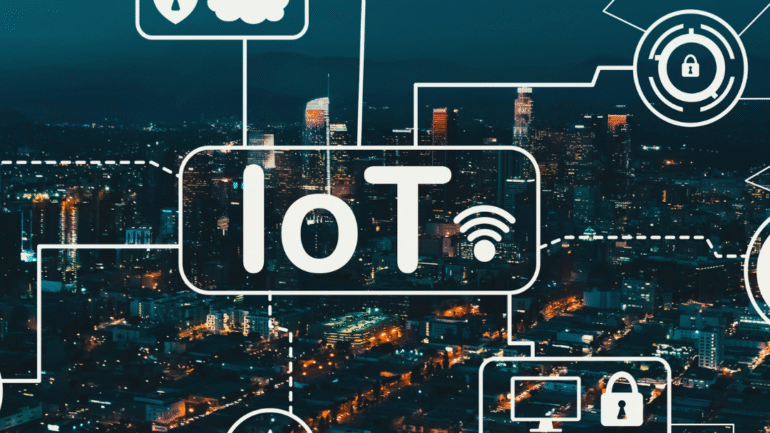The metaverse is redefining how individuals connect in the digital world, creating immersive experiences that transcend traditional online interactions. This shift allows people to engage in virtual worlds that offer richer social experiences and a sense of presence that standard platforms cannot provide. As users navigate these environments, they discover new ways to communicate, socialize, and collaborate, leading to a transformative impact on digital interactions.
Brands and creators are also starting to recognize the potential of the metaverse, using it as a platform for innovative marketing and engagement strategies. This evolution not only enhances user experience but also paves the way for a new economy where virtual assets and interactions hold real value. By participating in this digital revolution, users are reimagining their relationships with technology and each other.
As the metaverse continues to develop, its influence on social dynamics, business practices, and personal connections will only grow. Understanding this change is crucial for anyone wanting to stay ahead in an increasingly interconnected digital landscape.
Fundamental Technologies Powering the Metaverse
Several core technologies contribute to the metaverse’s evolution, enabling immersive environments and dynamic interactions. These technologies enhance user experiences and drive the digital economy, facilitating everything from social interaction to commerce.
Virtual Reality and Augmented Reality
Virtual Reality (VR) and Augmented Reality (AR) are fundamental to creating immersive experiences. VR offers users a completely simulated environment, allowing for interactions that mimic real-world activities, such as gaming or training simulations. Devices like Oculus Quest and HTC Vive are leading this space.
AR, on the other hand, overlays digital information onto the real world. Applications such as Pokémon Go and Microsoft HoloLens exemplify how AR can enhance daily activities by providing contextual information. Together, these technologies foster engaging content, enabling new forms of social connection and participation in digital realms.
Blockchain and Digital Assets
Blockchain technology underpins the ownership and transfer of digital assets within the metaverse. It enables secure transactions through decentralized ledgers, protecting user data from fraud. The use of cryptocurrencies facilitates purchases, allowing for seamless financial interactions across the metaverse.
Digital assets such as NFTs (non-fungible tokens) represent ownership of unique items, including digital art and virtual goods. This integration of digital ownership into the metaverse creates new economic models, empowering creators to monetize their works directly. Decentralization ensures greater control for users over their assets and identities.
Artificial Intelligence and Simulation
Artificial Intelligence (AI) plays a pivotal role in developing intelligent systems within the metaverse. AI enhances user interactions by personalizing experiences through techniques like machine learning. Virtual assistants and chatbots provide instant support, making immersive environments more dynamic.
Simulation technologies, including digital twins, replicate real-world entities for training and development purposes. These simulations can model complex scenarios, allowing for improved decision-making and predictive analytics. Together, AI and simulation contribute to the advancement of realistic and interactive spaces in the metaverse.
Connectivity and Interoperability
Robust connectivity is essential for a seamless metaverse experience. High-speed internet and 5G technology ensure that users can access immersive experiences without latency. This connectivity supports the integration of various platforms and applications.
Interoperability allows different virtual worlds and services to work together. This means that users can carry their assets, avatars, and identity across various platforms. Embracing standards is crucial for fostering a cohesive metaverse where collaboration and shared experiences thrive.
Transforming Social and Business Interactions
The metaverse is significantly reshaping how people connect and conduct business. By providing immersive environments, it enhances social interactions and business collaborations, while also presenting new challenges related to identity and privacy.
Immersive Socializing and Shared Experiences
In the metaverse, social interactions transcend traditional platforms. Users can engage in a digital universe, participating in activities like virtual concerts, game nights, and art exhibitions. These experiences foster a sense of community, allowing participants to share moments in real time, regardless of their physical locations.
User-generated content amplifies this experience, as individuals contribute their creations to the shared space. This cultivated environment encourages creativity and collaboration, leading to genuine connections among participants. Studies indicate higher engagement levels in these immersive settings, making socializing in digital spaces increasingly attractive.
Remote Work and Collaboration
The metaverse revolutionizes remote work by creating virtual offices and meeting spaces. Employees can collaborate using tools that simulate physical presence, enhancing productivity and communication. Business leaders report improved team dynamics as virtual meetings allow for more interactive discussions.
Platforms within the metaverse provide customizable workspaces, helping companies maintain a cohesive brand identity. Features such as real-time document editing and collaborative design tools further streamline processes. This shift not only improves efficiency but also supports global talent recruitment, enabling businesses to tap into diverse skill sets.
Customer Experience and Engagement
Customer experience is redefined in the metaverse. Brands are leveraging virtual environments to create engaging marketing campaigns. These digital spaces allow consumers to interact with products in immersive ways, enhancing the shopping experience.
For example, virtual showrooms enable potential buyers to explore products as if they were physically present. This interactivity drives customer engagement and often leads to higher conversion rates. In addition, businesses can collect valuable data on consumer behavior in these settings, informing future marketing strategies.
Digital Identity and Privacy Challenges
As interactions in the metaverse increase, so do concerns about digital identity and privacy. Users navigate a landscape where their online personas can differ significantly from their real selves. This raises questions about trust and consent, especially regarding personal data handling.
Companies must implement transparent policies to protect user information within these digital spaces. Ensuring privacy and building trust are paramount for long-term success. As the metaverse evolves, addressing these challenges will be crucial for maintaining safe and engaging environments.
Industry Applications and Economic Impact
The metaverse is shaping various sectors by enhancing digital interactions and creating new economic opportunities. From gaming to real estate, industries are adopting immersive technologies to redefine customer engagement and operational efficiency.
Gaming and Entertainment Evolution
The gaming industry has undergone a significant transformation through the metaverse, enhancing user engagement with immersive experiences. Major platforms, like Decentraland, allow players to participate in vast digital worlds that offer social interaction and creative content.
Gamers can buy, sell, and trade virtual assets, creating a new economy. The integration of blockchain technology ensures secure transactions and ownership of in-game items. This shift has attracted significant investment, driving the expansion of immersive gaming titles.
Moreover, live events and concerts within virtual environments are changing entertainment delivery. Major artists are hosting performances in the metaverse, reaching wider audiences while offering unique, interactive experiences.
Education and Training Innovations
The metaverse is revolutionizing education by providing immersive simulations that enhance learning. Virtual and augmented reality tools enable interactive lessons, allowing students to explore complex topics like history or science through firsthand experience.
Training programs, particularly in fields like manufacturing and logistics, are increasingly adopting these tools. For example, companies can simulate equipment operations, enabling employees to gain hands-on experience without real-world risks.
Additionally, educational institutions are utilizing virtual classrooms to transcend geographical barriers. Students can attend lectures and engage in group projects from anywhere, broadening access to quality education.
Business and Retail Transformation
Business operations are adapting to the metaverse by utilizing digital marketplaces. Virtual retail spaces allow brands to showcase products in interactive formats, enhancing customer engagement.
In retail, businesses can create unique shopping experiences that resemble physical stores while reaching global audiences. This shift encourages innovation in marketing strategies and customer interactions, driving sales through enhanced consumer experiences.
Furthermore, supply chains benefit from integrated virtual environments that facilitate logistics management. Businesses can simulate processes, optimizing efficiency and reducing costs, resulting in more agile operations.
Real Estate, Investment, and Virtual Land
The real estate sector is experiencing a paradigm shift with the rise of virtual land ownership in the metaverse. Investors are purchasing parcels of digital real estate on platforms like Decentraland, expecting value appreciation as virtual economies grow.
This virtual land can be developed for various purposes, such as entertainment, retail, or office spaces. The performance of these digital assets is linked to user engagement and platform popularity, driving interest from venture capitalists and investors.
Moreover, the creation and sale of virtual properties involve complex dynamics, including marketing strategies and community engagement. This emerging market presents unique opportunities for real estate professionals looking to capitalize on the digital landscape.
Security, Governance, and the Future of Digital Interactions
As the metaverse evolves, security and governance issues become paramount. Trust and privacy are essential for user engagement, while strategies for sustainability will shape the virtual landscape.
Security and Privacy in the Metaverse
In the metaverse, security threats can manifest in various forms, including data breaches, harassment, and identity theft. Users require robust measures to safeguard their personal information. This includes end-to-end encryption and two-factor authentication to enhance security.
Privacy concerns are heightened due to the interconnected nature of digital environments. Users must be aware of how their data is collected, stored, and utilized. Transparency is vital. Clear user agreements and privacy policies can help build trust, allowing users to make informed choices regarding their participation.
Governance, Regulation, and Consent
Governance in the metaverse involves creating frameworks to manage user interactions and establish standards for behavior. As multiple stakeholders, including developers and users, engage in this space, effective governance is crucial.
Regulatory bodies are beginning to explore how existing laws apply to virtual worlds. Questions about jurisdiction and accountability are critical. Consent mechanisms must be in place, ensuring that users clearly understand how their data and actions are monitored and governed within these virtual environments.
Sustainability and Future Directions
Sustainability encompasses environmental, social, and economic considerations in the development of the metaverse. Emerging technologies can both aid and complicate these goals. For example, blockchain can enhance transparency but may also contribute to significant energy consumption.
Future efforts should focus on sustainable practices in technology deployment. Collaborations across sectors can drive initiatives focused on reducing carbon footprints and promoting ethical interaction. The direction taken in these early stages can set precedents for how the metaverse develops, influencing user experiences and interactions for years to come.




